


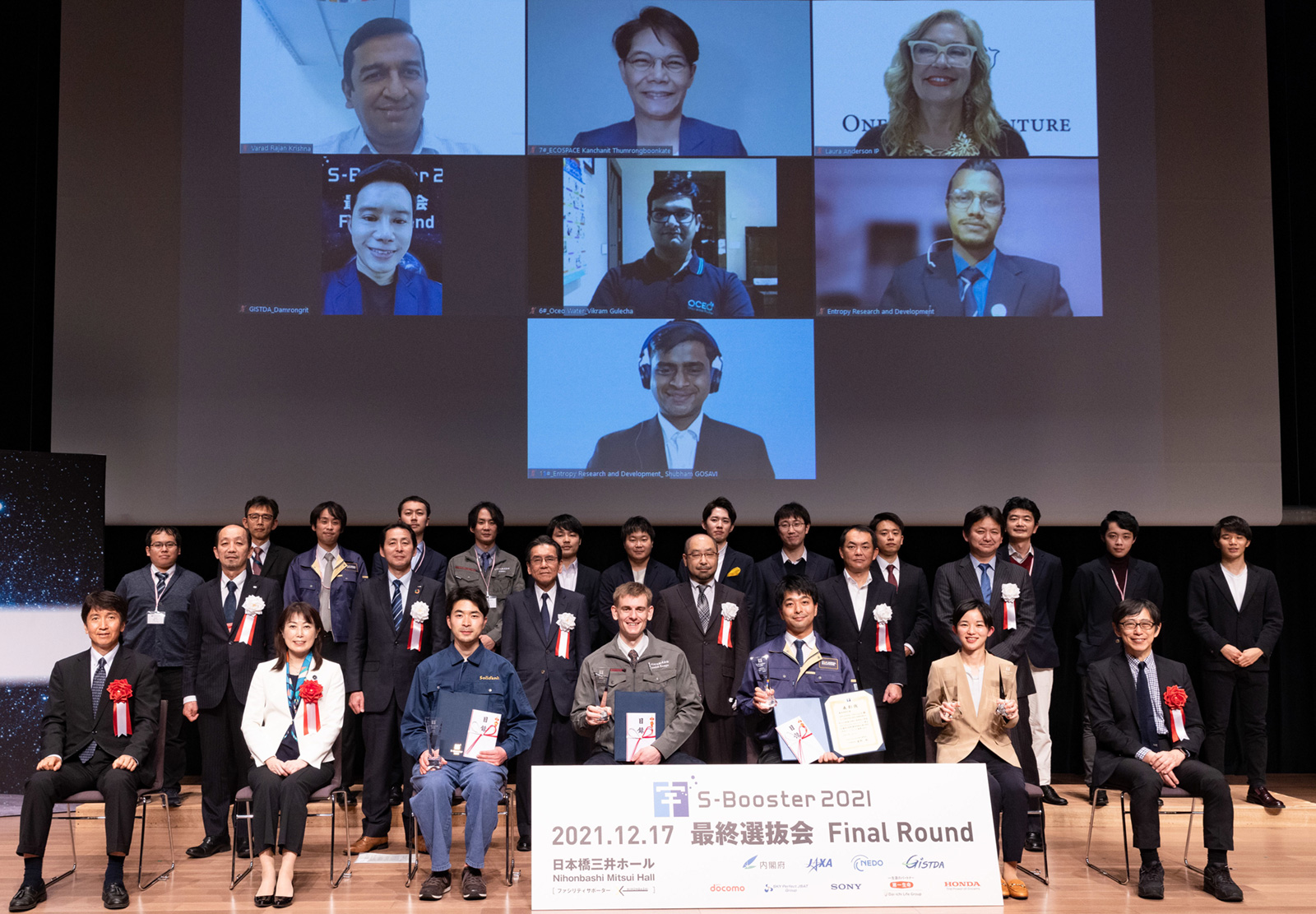
Time / Date are all in Japan Standard Time (JST).
Date: Friday, December 17, 2021, 14:00-18:15
Venue:
- Online
- Nihonbashi Mitsui Hall (COREDO Muromachi 1 4F/5F, 2-2-1 Nihonbashi Muromachi, Chuo-ku, Tokyo 103-0022)
* In principle, residents outside Japan will attend online.
Access:
| Time (JST) |
Agenda |
|---|---|
| 13:30 | Reception starts, venue opens |
| 14:00 | Opening Ceremony |
| 14:00-14:25 | Introduction of judges, awards and judging process |
| 14:25-14:35 | 1. Business of Recycling Abandoned Ships And Shipwrecks [Presentation moive (in Japanese)] |
| Team Name: BRASAS / Representative: Mr. Yuya Shibata | |
| Abandoned boats are present throughout the world as marine debris that causes secondary disasters such as water pollution and disasters. We will reuse the abandoned boat and support aquaculture. By equipping abandoned boats collected from local governments with an automatic navigation module and ocean sensing function that utilize satellite data, it will be transformed into an automatic navigation ship that can acquire data necessary for aquaculture and assist marine operations. We will reform aquaculture while solving the problem of abandoned boats. |
|
| 14:35-14:45 | 2. Improving small spacecraft mobility with a hybrid kick motor [Presentation moive (in Japanese)] |
| Team Name: Letara / Representative: Dr. Landon Kamps | |
| Most satellites rideshare to space, but since there are currently no safe and fast thrusters, these satellites are unable to move from their rideshare orbits and have no prospect for future traffic management. We are offering a safe and fast spacecraft thruster which will enable rideshare satellites to change orbits freely. In the future, we expect that a network of space transportation hubs will be constructed - in Earth, Lunar, and Mars orbits. In this future, our thrusters will become even more important as a method of last mile transportation to deliver spacecraft from major space hubs to their final destinations. | |
| 14:45-14:55 | 3. Lunar Night Survival as a Service [Presentation moive] |
| Team Name: Moonlode / Representative: Dr. Andrew Barton | |
| More than 30 organisations around the world are developing lunar surface equipment today, aiming to fly on commercial landers in the next 1-5 years. Some of them are planning to spend over $50M on their mission, which without lunar night survival capability, will operate for less than 2 weeks on the Moon. Moonlode's Survival product range enables small, integrated and modular solutions to support equipment to survive the lunar night. The solution would be modular and space-qualified. The Survival product range, and associated product customizations and consulting, has the potential to generate US$30M of revenue over the next 10 years, just in the beachhead market of lander-mounted equipment. From this beachhead, Moonlode will expand into the much bigger markets for infrastructure on the Moon. |
|
| 14:55-15:05 | 4. Development of an ocean observation system for efficient exploration of marine resources [Presentation moive (in Japanese)] |
| Team Name: MizLinx / Representative: Ms. Naho Yashiro | |
| We will develop an ocean observation system to improve the efficiency of marine resource exploration. Marine resources can be divided into fishery resources and seabed resources such as rare metals. Currently we are developing a system to solve the problem of the fishery industry to realize a sustainable fishery. In the future, our goal is to create a marine data platform service that can be used in all maritime industries, including the exploration of seabed resources. | |
| 15:05-15:15 | Break |
| 15:15-15:25 | 5. Static Electricity Detection Service in Space [Presentation moive (in Japanese)] |
| Representative: Nano Q / Representative: Mr. Yuji Ota | |
| Preventing electrostatic damage to satellites is essential for advancing into the mid-orbit zone and for operating a large number of satellites. We propose a service to detect static electricity, which has been a problematic cause of unpredictable accidents in space development for half a century. Using silicon optical technology, it's possible to develop an electrostatic detection sensor that can be used safely in space. The company will sell static electricity detection modules to the space industry, which is struggling to deal with static electricity. We will start our business in the space field and expand it to the ground field. | |
| 15:25-15:35 | 6. Suijin - Water Quality Measurement from Space [Presentation moive] |
| Team Name: Oceo Water Private Limited / Representative: Mr. Vikram Gulecha | |
| Suijin provides satellite-based hydrological analysis for remote water quality monitoring for lake, ponds and other open water bodies. Unlike conventional costly and time-consuming sample collection and IoT based point measurement methods used in lake water quality analysis, our services can help detect, predict and forecast productivity of lakes at a high rate of precision without physically being present on the field. | |
| 15:35-15:45 | 7. EcoSpace: IOT Satellite the Wildfire Early Warning Detection Systems [Presentation moive] |
| Team Name: EcoSpace / Representative: Ms. Kanchanit Thumrongboonkate | |
| EcoSpace provides the wildfire early warning system detection by leverage the IOT Satellite communication in non-internet coverage area example forest. By the combination of ground sensors and IOT satellite, we can provide the early stage of wildfire monitoring. EcoSpace's Prototypes was successfully tested with IOT Satellite of the University of Tokyo during Oct 2020 to Mar 2021. | |
| 15:45-15:55 | 8. ChipSpace [Presentation moive] |
| Team Name: ChipSpace / Representative: Ms. Maria Victoria Alonsoperez | |
| ChipSpace is a platform that correlates data from Chipsafer's terrestrial sensors with purchased Axelspace satellite imagery in order to assist livestock farmers increase their yield by making better use of the resources they have, such as land and water, while also contributing to regenerative farming. More precisely, this combined Chipsafer and satellite data can help farmers: detect pasture quality/ degradation early on; improve their management at the farm level; and achieve timely selection of rotation areas for better pasture management. In a latter phase, this data can additionally be used to delaminate grazing areas and assess if farms are emitting or sequestering carbon. | |
| 15:55-16:05 | Break |
| 16:05-16:15 | 9. Providing interorbital transport services with the aim of offering repair services on the ISS |
| Team Name: MiNi-D / Representative: Mr. Ken Kawasaki | |
| We will provide satellite transport services utilizing transfer equipment between near-Earth orbits (low orbit to geostationary orbit). The same transfer equipment will be used to transport satellites to the ISS and perform repair services. We will start by providing transport services, with the aim of offering repair services in the future. | |
| 16:15-16:25 | 10. Solid Knitting Machine: A Novel 3D Printing Technique Which Makes Physical Objects Updatable [Presentation moive (in Japanese)] |
| Team Name: Solidknit / Representative: Mr. Yuichi Hirose | |
| We enable manufacturing and recycling in space by developing a Solid Knitting Machine, a novel 3D printing technique using knitting. Solid knitting is our unique method to knit solid and dense objects. Thanks to the nature of knitting, the machine can make it possible to "unwind a chair to reknit it into a desk," which we call "update of physical objects." Since it needs tremendous costs to deliver objects to space, the high recyclability of our technology is drastically advantageous. | |
| 16:25-16:35 | 11. Energy Orbit [Presentation moive] |
| Team Name: Entropy Research & Development / Representative: Mr. Shubham Gosavi | |
| Power generation and management perform a substantial role in the satellite industry. The increasing annual number of satellites in Low Earth orbit will drastically heighten the need for continuous power. Currently, satellites implement a traditional method for power generation using the solar panel and radioisotope generator (RTG) with battery storage capacity. Such a system increases the weight, cost, and valuable space. And it can be lower by 15-25% by introducing Energy orbit (E-orbit), which is the concept of laser power transmission to customer satellites in LEO with 1600 Energy Satellite (E-Sat). E-Sat will also provide multiple services like energy transfer, orbit transfer, and de-orbiting to LEO-based satellites. Hence, customers will save a lot of money after accessing services from E-Orbit and generate new economic value with space sustainability. | |
| 16:35-16:45 | 12. Software as a Service for satellite collision avoidance with space situational awareness by using star trackers [Presentation moive (in Japanese)] |
| Team Name: Star Signal Solutions / Representative: Mr. Akihiro Iwaki | |
| This is a satellite operation software as-a-service for national governments and private businesses that are overburdened with preventing traffic accidents in outer space due to unclear space conditions. Utilizing satellite onboard star trackers for space environment observation, highly accurate and extensive space condition monitoring can be achieved at extremely low cost. By using this observation data to provide appropriate and accurate navigation information, it streamlines satellite collision avoidance operations, which are irregular and inefficient risk response activities, and protects customer satellites and the space environment. | |
| 16:45-16:55 | Break |
| 16:55-17:40 |
Special talks S-Booster 2021 Final Selection Talk Session
|
| 17:40-17:45 | Break |
| 17:45-18:12 | Announcement of results, Award Ceremony 1. Comment from the chief special judge 2. Sponsor Prizes(1 idea / prize) 3. JAXA Prize(1 idea) 4. Asia-Oceania Prize(1 idea) 5. Special Judges' Prize(1 idea) 6. Grand Prize(1 idea) |
| 18:12-18:15 | General comments and closing remarks |
| 18:15 | Closing |
There was an exhibition by the sponsors in the foyer.
NTT DOCOMO, INC., SKY Perfect JSAT Corporation, Sony Group Corporation, The Dai-ichi Life Insurance Company, Limited, Honda R&D Co., Ltd.
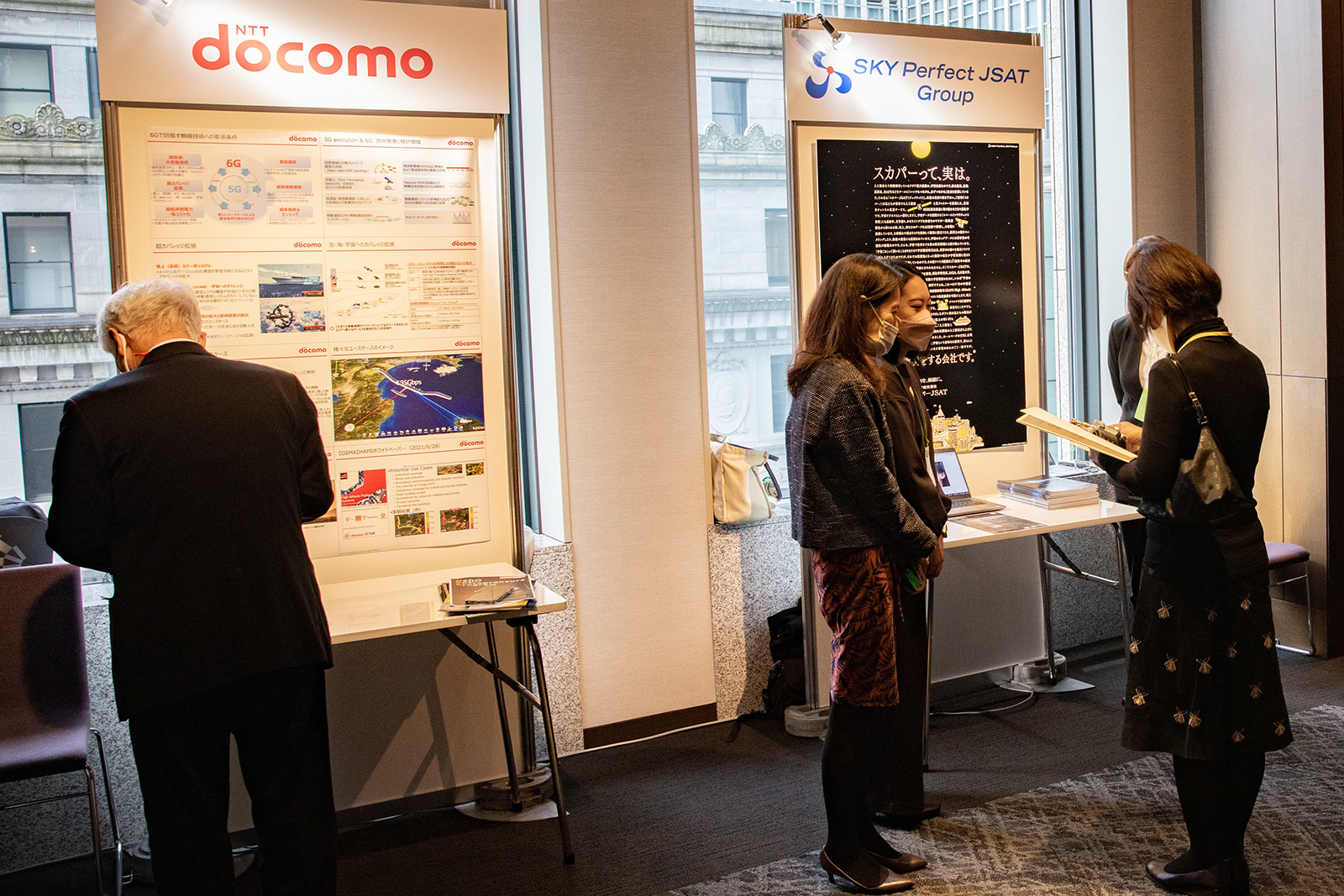
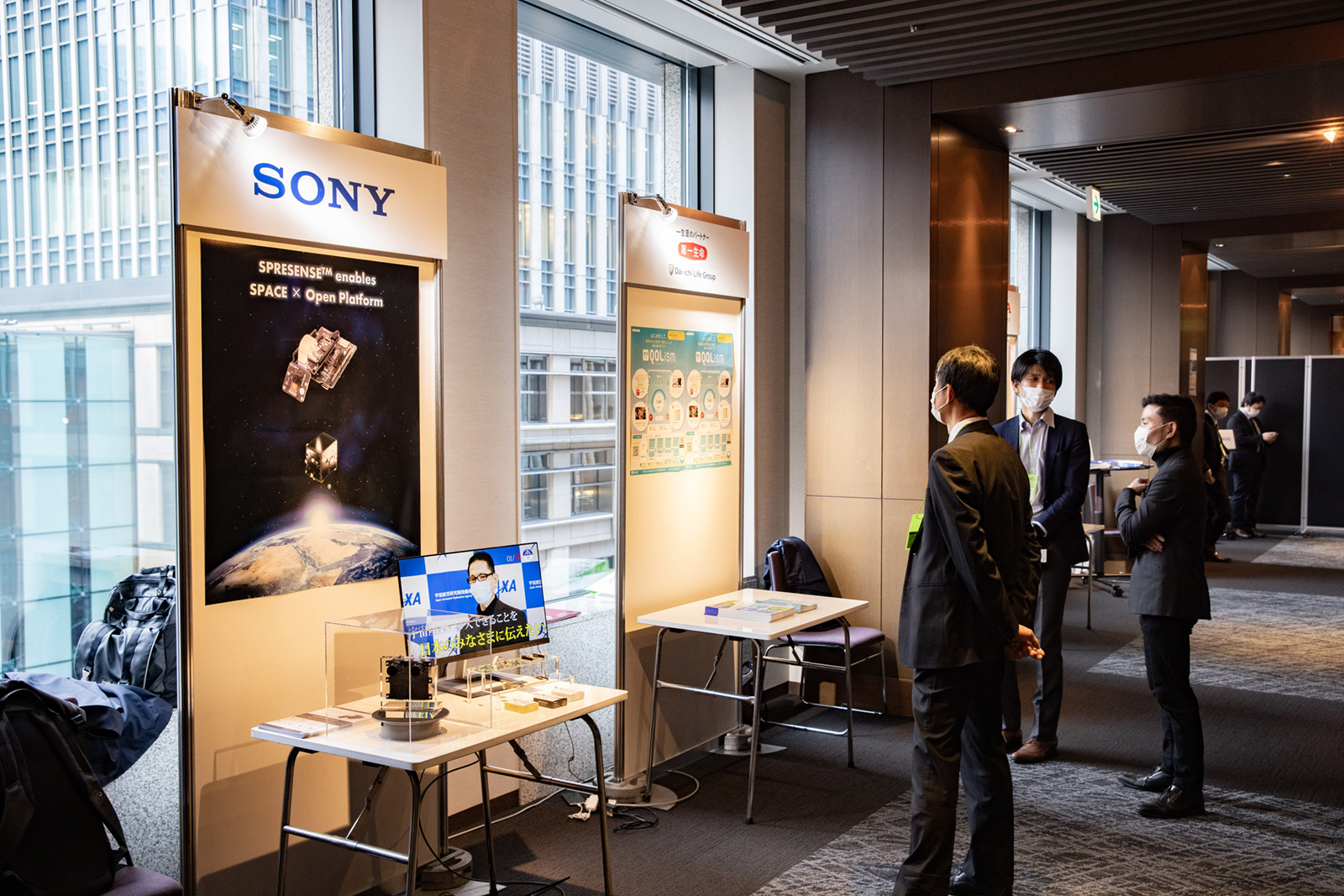
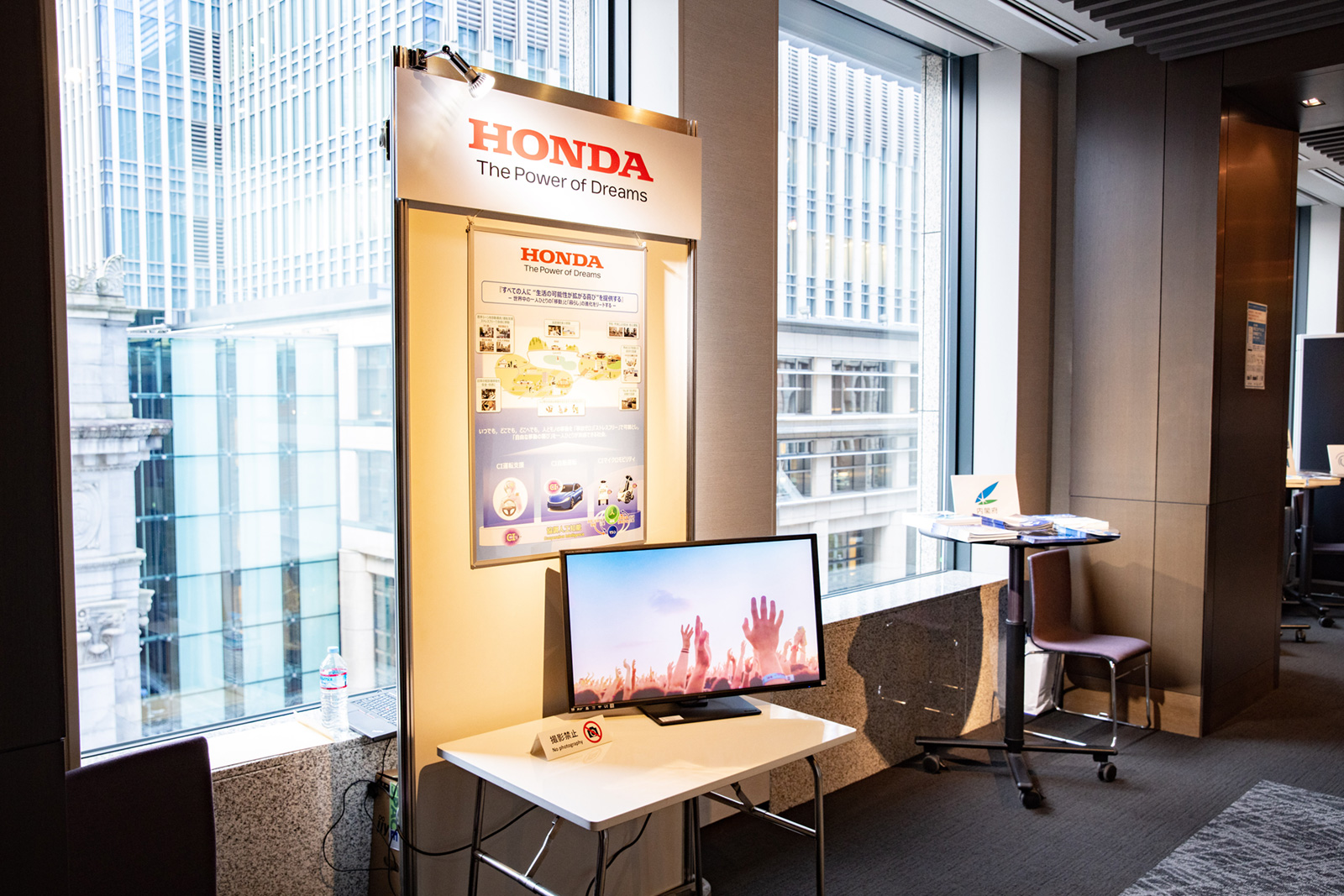
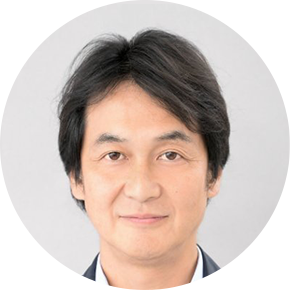
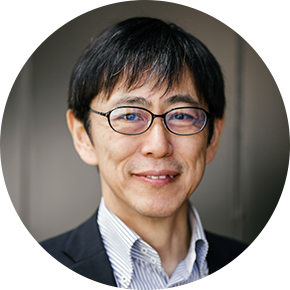
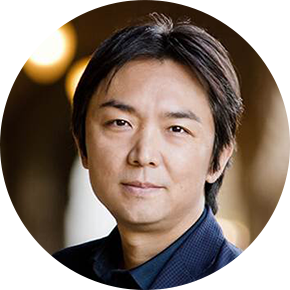

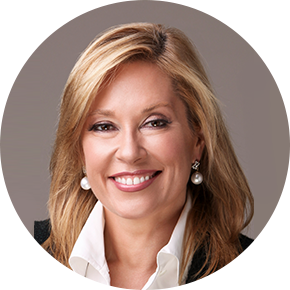
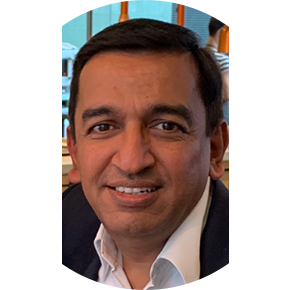
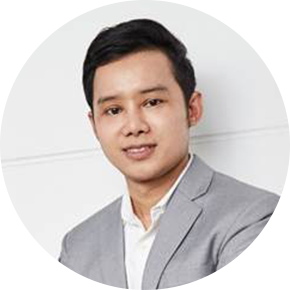
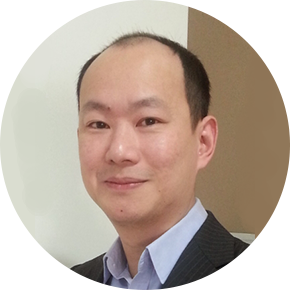
Sponsors and JAXA
Note1: The Chief Special Judge, Prof. Takeshi NATSUNO and the Special Judge member Mr. Gen ISAYAMA were unable to attend due to sudden circumstances. Prof. SHIBASAKI of the Special Judge acted in place of the Chief Special Judge accordingly.
The following prizes were awarded after an intensive discussion.
| Name of prize | Idea name / Team name |
|---|---|
| Grand Prize | EcoSpace : IOT Satellite the Wildfire Early Warning Detection Systems [Presentation moive] EcoSpace |
| Special Judges' Prize | Software as a Service for satellite collision avoidance with space situational awareness by using star trackers [Presentation moive (in Japanese)] Star Signal Solutions |
| Asia-Oceania Prize | Improving small spacecraft mobility with a hybrid kick motor [Presentation moive (in Japanese)] Letara |
| Sponsor Prize |
NTT DOCOMO PrizeChipSpace [Presentation moive]ChipSpace |
SKY Perfect JSAT PrizeEnergy Orbit [Presentation moive]Entropy Research & Development |
|
Sony Group PrizeEcoSpace : IOT Satellite the Wildfire Early Warning Detection Systems [Presentation moive]EcoSpace |
|
The Dai-ichi Life PrizeDevelopment of an ocean observation system for efficient exploration of marine resources[Presentation moive (in Japanese)] MizLinx |
|
Honda R&D PrizeDevelopment of an ocean observation system for efficient exploration of marine resources[Presentation moive (in Japanese)] MizLinx |
|
| JAXA Prize | Solid Knitting Machine: A Novel 3D Printing Technique Which Makes Physical Objects Updatable [Presentation moive (in Japanese)] Solidknit |
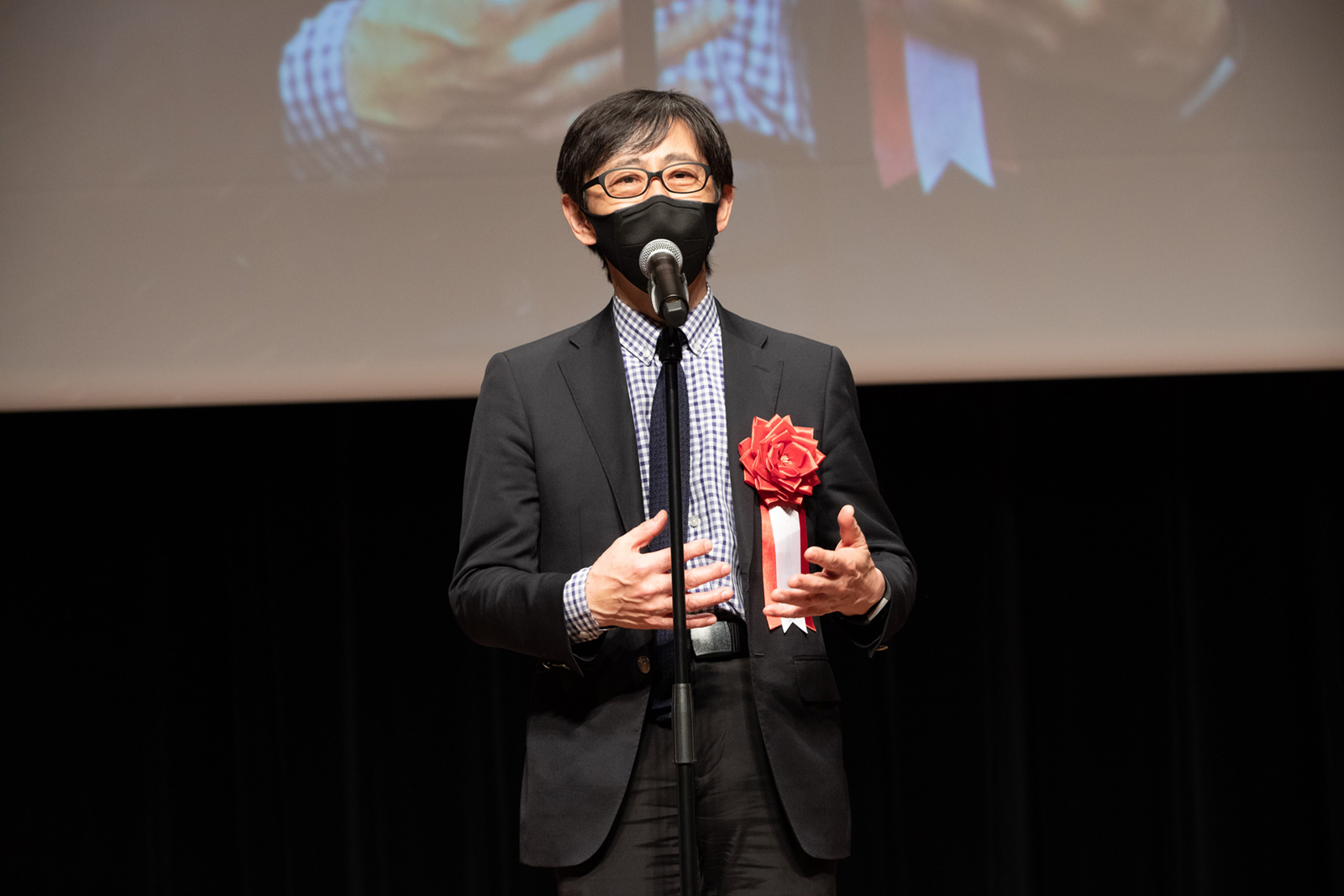
Looking back at the beginning of the S-Booster contest, most of the proposed ideas, as I remember, were based on existing space infrastructures and satellites, as well as data obtained from the satellites. This year, however, in addition to those ideas including ones to analyze solution data with software, there seems to be increasing ambitious ideas that aim to create innovative technologies to support microsatellites. Cutting-edge technology is not particularly useful on its own. It is important to establish an ecosystem, in which we can effectively and efficiently operate microsatellite constellations. This has made me realize that we need to expand our industrial ecosystem although it is still a work in progress. Data, software, tools, and analytical techniques have reached a much higher level of perfection than they used to be. In other words, the big point is how to scale up horizontally by using that cloud or space-based communications infrastructure. To encourage these efforts, it is important that the judges today and senior members continue supporting.
It is impressive for me that this year's contest includes teams of young engineers in companies as well as a team made up entirely students. They presented their sophisticated and impressive ideas. It is, however, important to create a story of how to bring the idea in a market, where to start its approach, in addition to good technologies and enthusiasm. The way that they tell a story to attract investment is also very important.
Opportunities to match ideas with investors are of great value. S-Booster is a fountain of ideas. We need to consider how to expand and nurture the ideas that come out of it, and how to organize them within the framework of S-Booster. For this reason, we need to continue to strengthen our system. Thank you very much for your time today.
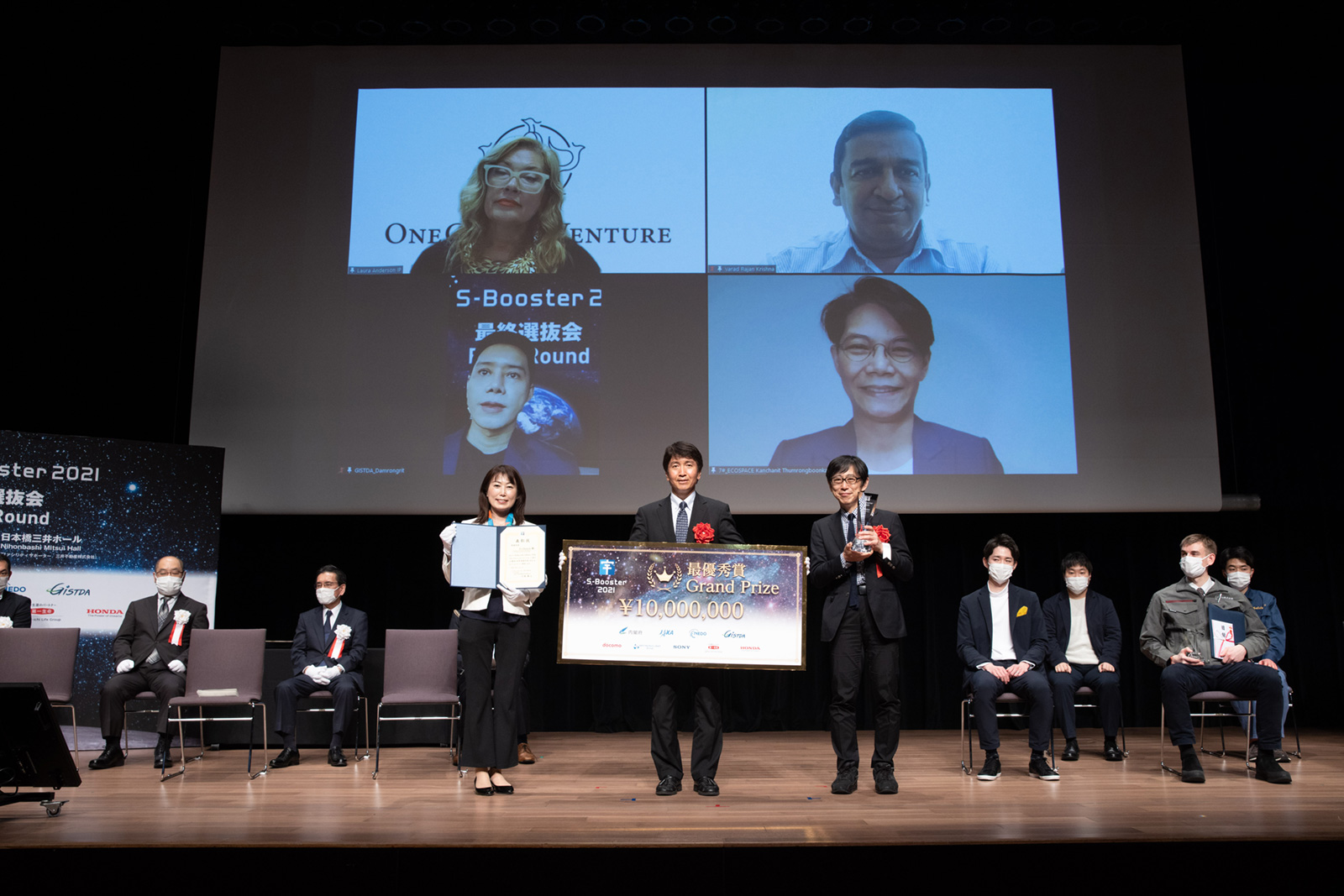
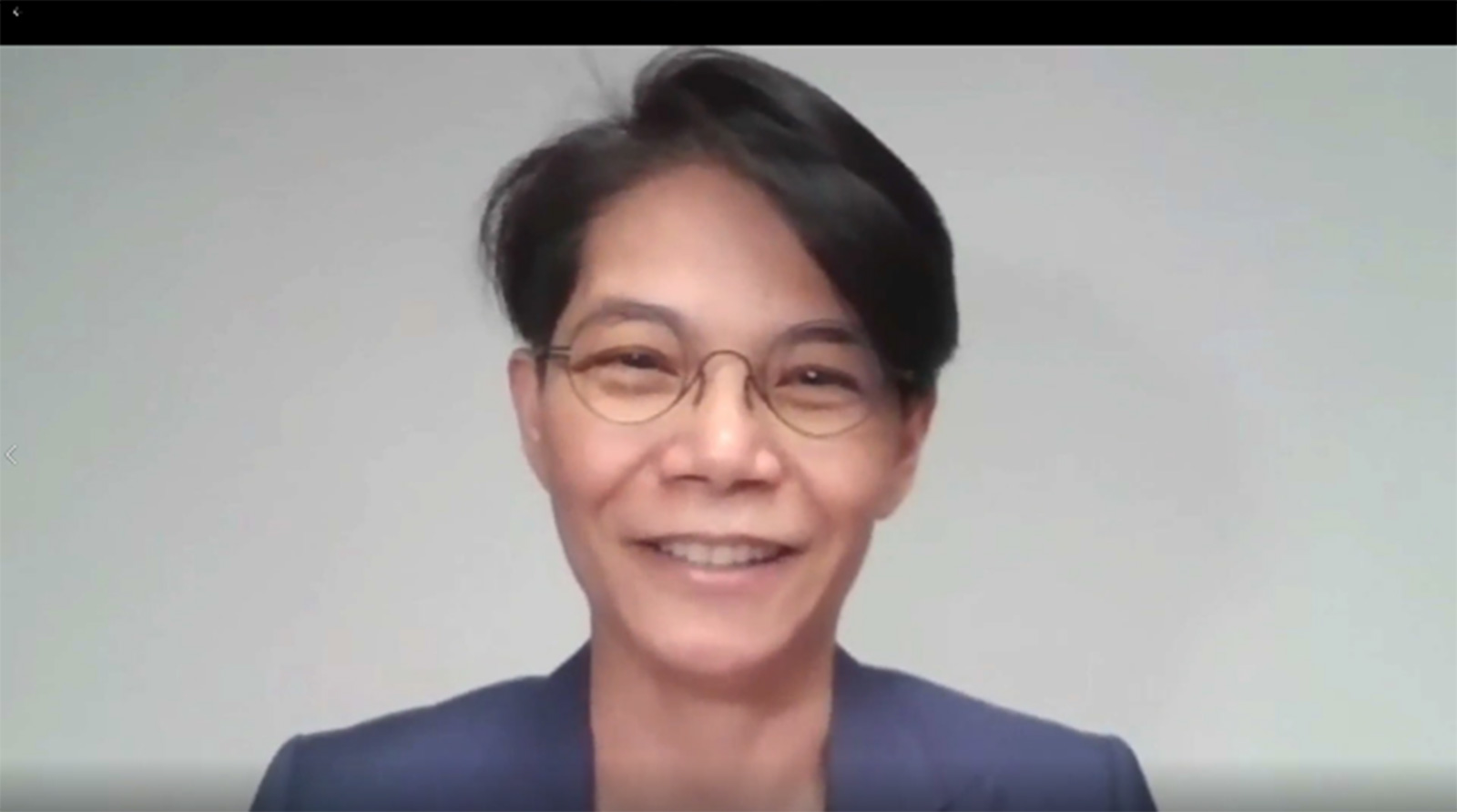
Team Name: EcoSpace / Representative: Ms. Kanchanit Thumrongboonkate
Lead Mentor: Mr. Hidetaka Aoki (Space Business Evangelist)
Sub Mentor: Mr. Masayuki Sakata (Deloitte Touche Tohmatsu LLC)
| Idea Outline | EcoSpace provides the wildfire early warning system detection by leverage the IOT Satellite communication in non-internet coverage area example forest. By the combination of ground sensors and IOT satellite, we can provide the early stage of wildfire monitoring. EcoSpace's Prototypes was successfully tested with IOT Satellite of the University of Tokyo during Oct 2020 to Mar 2021. |
| Comment of Judge | In a word, I felt that EcoSpace started to create an incredibly beautiful story. The wildfire is a problem that will occur in many places in the future, and they are an inexcusable disaster for the people and animals affected. It is a great idea that team members work hard to create sensors and sweat over placing them in the forest, and then the data is transmitted via satellite and used to warn people or guide them to evacuate. The Indochina Peninsula is a region where there is a lot of slash-and-burn, and a lot of forest fires, but other than forest fires, there are, for example in Indonesia, also peat fires. Peat fires are also often occurred in Siberia, America, and Brazil, and I think EcoSpace has created a beautiful story using space assets to address these global issues. We would like to see this project expand in the future, and that is why we gave it this award. |
| Comment of Winner | First of all, I would like to thank Cabinet Office (of Japan) and S-Booster team that allow other countries in Asia-Oceania to join this very good project. I would also like to thank my mentors who have helped us a lot brush up our project from the early idea stage to the state that we can develop some prototypes. I would like to thank the University of Tokyo and GISTDA of Thailand for their supports. For me this is the second time to join S-Booster. This project came from the day that I joined as a finalist in 2019. When I participated in a workshop in the UT I heard the word of IoT satellite for the first time and I asked if we can join the technology (project) in order to solve the problem of forest fire. From that day until today we achieve this milestone. Thank you so much. |
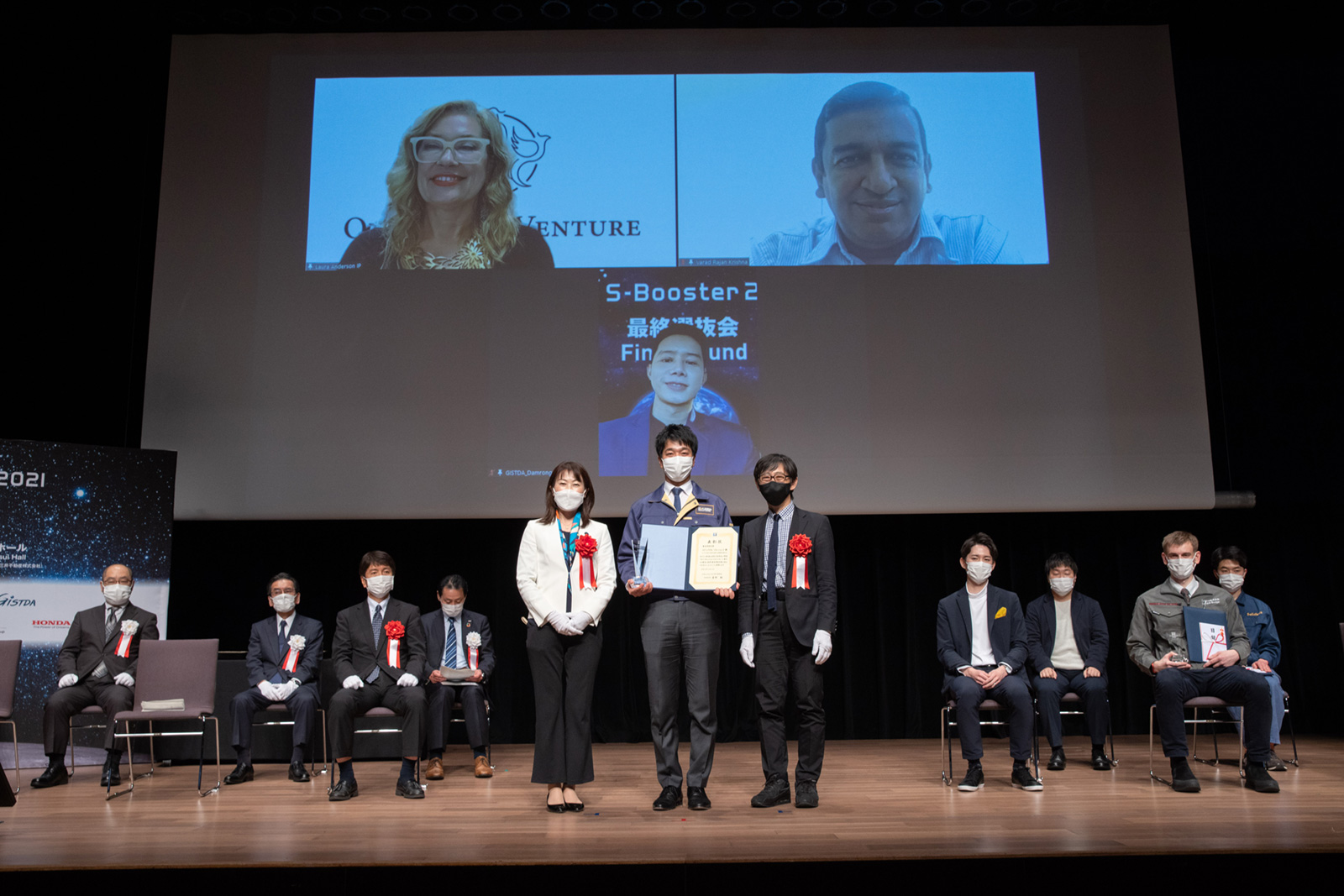
Team Name: Star Signal Solutions / Representative: Mr. Akihiro Iwaki
Lead Mentor: Mr. Takashi Uehara (SOMPO Holdings, Inc.)
Sub Mentor: Mr. Fumiaki Nagase (D4V)
Special Mentor: Mr. Tomonari Yamasaki (Uchida & Samejima Law Firm)
| Idea Outline | This is a satellite operation software as-a-service for national governments and private businesses that are overburdened with preventing traffic accidents in outer space due to unclear space conditions. Utilizing satellite onboard star trackers for space environment observation, highly accurate and extensive space condition monitoring can be achieved at extremely low cost. By using this observation data to provide appropriate and accurate navigation information, it streamlines satellite collision avoidance operations, which are irregular and inefficient risk response activities, and protects customer satellites and the space environment. |
| Comment of Judge | Congratulations! Space situational awareness is especially important in the world and this team has faced this critical technology to support the increasing number of satellites. In addition, the fact that you focused on an element that was usually regarded as noise in the star tracker and used it for the orbit calculation, and above all, the fact that you provided a solution, not just an alarm, at a lower price from the user's point of view, is truly wonderful. The judges highly praised it. I believe that making space safer and more accessible for everyone will lead to the further development of space assets such as satellites and space stations. I am sure that this will also benefit the Earth. I hope that your enthusiasm will help make space and the Earth a better place. |
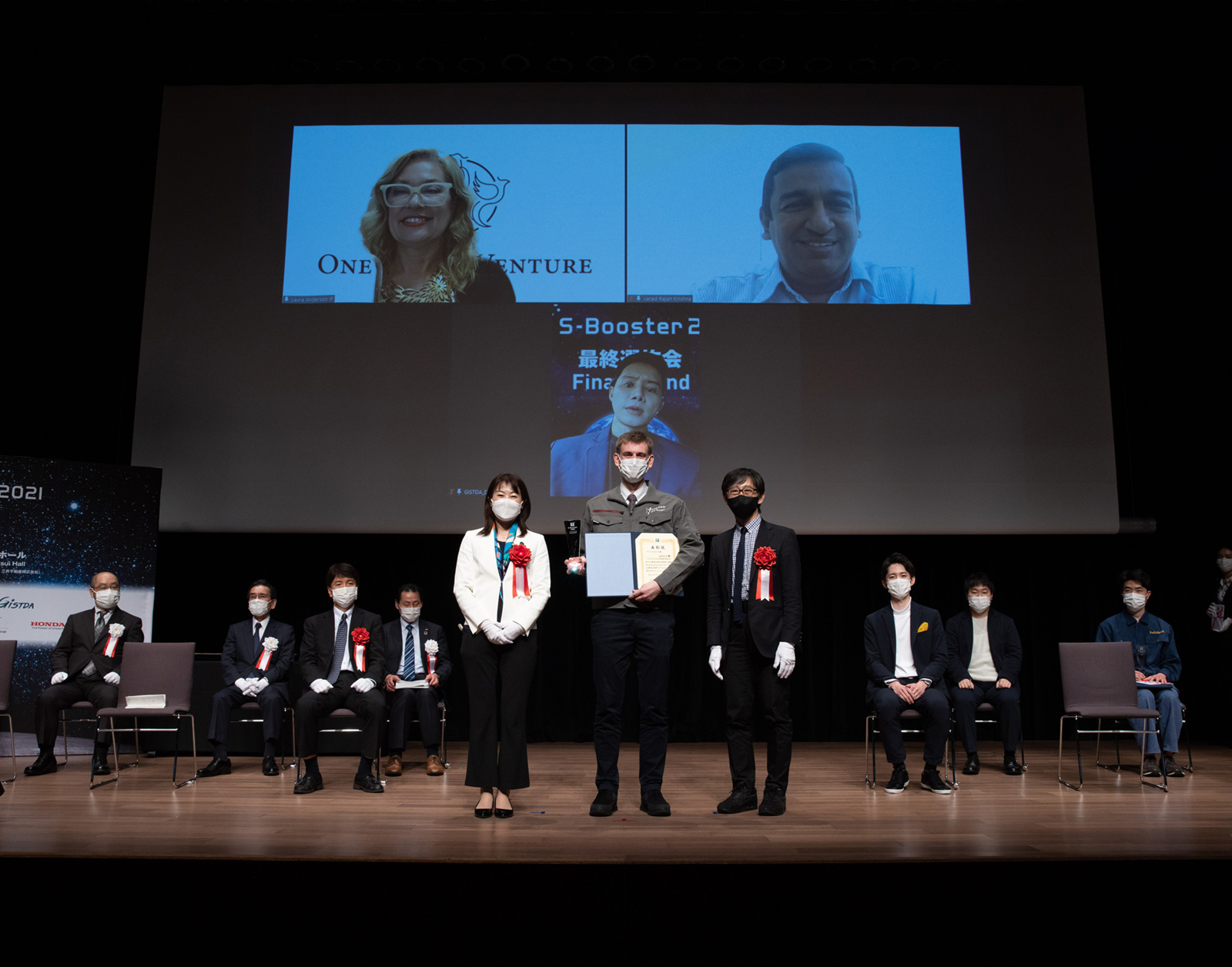
Team Name: Letara / Representative: Dr. Landon Kamps
Lead Mentor: Mr. Kiichiro DeLuca (WERU Investment)
Special Mentor: Mr. Daisuke Mosaka (Mori Hamada & Matsumoto)
| Idea Outline | Most satellites rideshare to space, but since there are currently no safe and fast thrusters, these satellites are unable to move from their rideshare orbits and have no prospect for future traffic management. We are offering a safe and fast spacecraft thruster which will enable rideshare satellites to change orbits freely. In the future, we expect that a network of space transportation hubs will be constructed - in Earth, Lunar, and Mars orbits. In this future, our thrusters will become even more important as a method of last mile transportation to deliver spacecraft from major space hubs to their final destinations. |
| Comment of Judge | It is my great honor to offer a vote of congratulations to you and your amazing team. I am a big believer in "Lead, follow or please step out of the way." You are one of the best and brightest visionary leaders committed to enabling the sustainable future of Spaceship Earth. You are one of the leaders, I call them the pathfinders, the inventors, the collaborators. Your international team has so many opportunities to go global. And we all look forward to doing what we can to support you. You will propel us forward in mankind's journey to becoming a multi-planetary species over the next few decades. We need to do whenever we can to work together as a star team versus a team of stars to inspire, to empower, to enable the best possible outcomes for Spaceship Earth and our journey towards becoming an interplanetary species. I love your concept of repurposing plastic. I love the concept of the last mile. And I wish you every success. Thank you so much. |
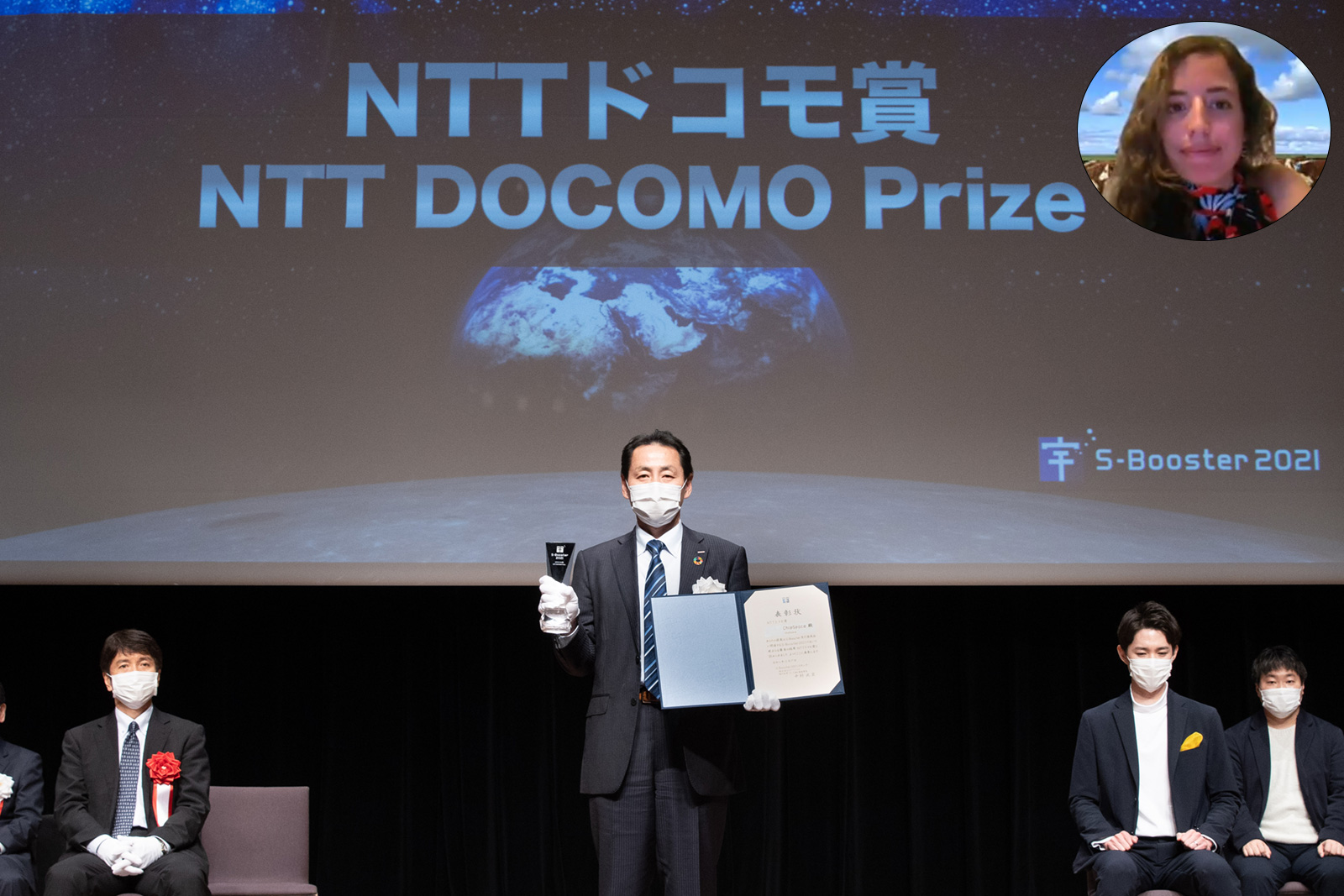
Team Name: ChipSpace / Representative: Ms. Maria Victoria Alonsoperez
Lead Mentor: Mr. Noriaki Ozaki (TX Entrepreneur Partners)
Sub Mentor: Mr. Keis Ide (The University of Tokyo Edge Capital Partners (UTEC))
| Idea Outline | ChipSpace is a platform that correlates data from Chipsafer's terrestrial sensors with purchased Axelspace satellite imagery in order to assist livestock farmers increase their yield by making better use of the resources they have, such as land and water, while also contributing to regenerative farming. More precisely, this combined Chipsafer and satellite data can help farmers: detect pasture quality/ degradation early on; improve their management at the farm level; and achieve timely selection of rotation areas for better pasture management. In a latter phase, this data can additionally be used to delaminate grazing areas and assess if farms are emitting or sequestering carbon. |
| Comment of Judge | We have already developed the next generation of mobile communication systems and are looking to dramatically expand our service area from the air to the sea and even into space. Among them, space is an especially important theme for us, which is why we have joined S-Booster this time. When we think about what we can do with a drastically expanded service area, we want to use it in ways of providing our services for such places, for example in the case of primary industry, as not enough services have been available in, by sensing, obtaining, and utilizing large amount of data, and providing a range of services. The ChipSpace's idea is a perfect model for this kind of use. We hope the team will continue its work well, and we would be incredibly happy if we could be part of it. |
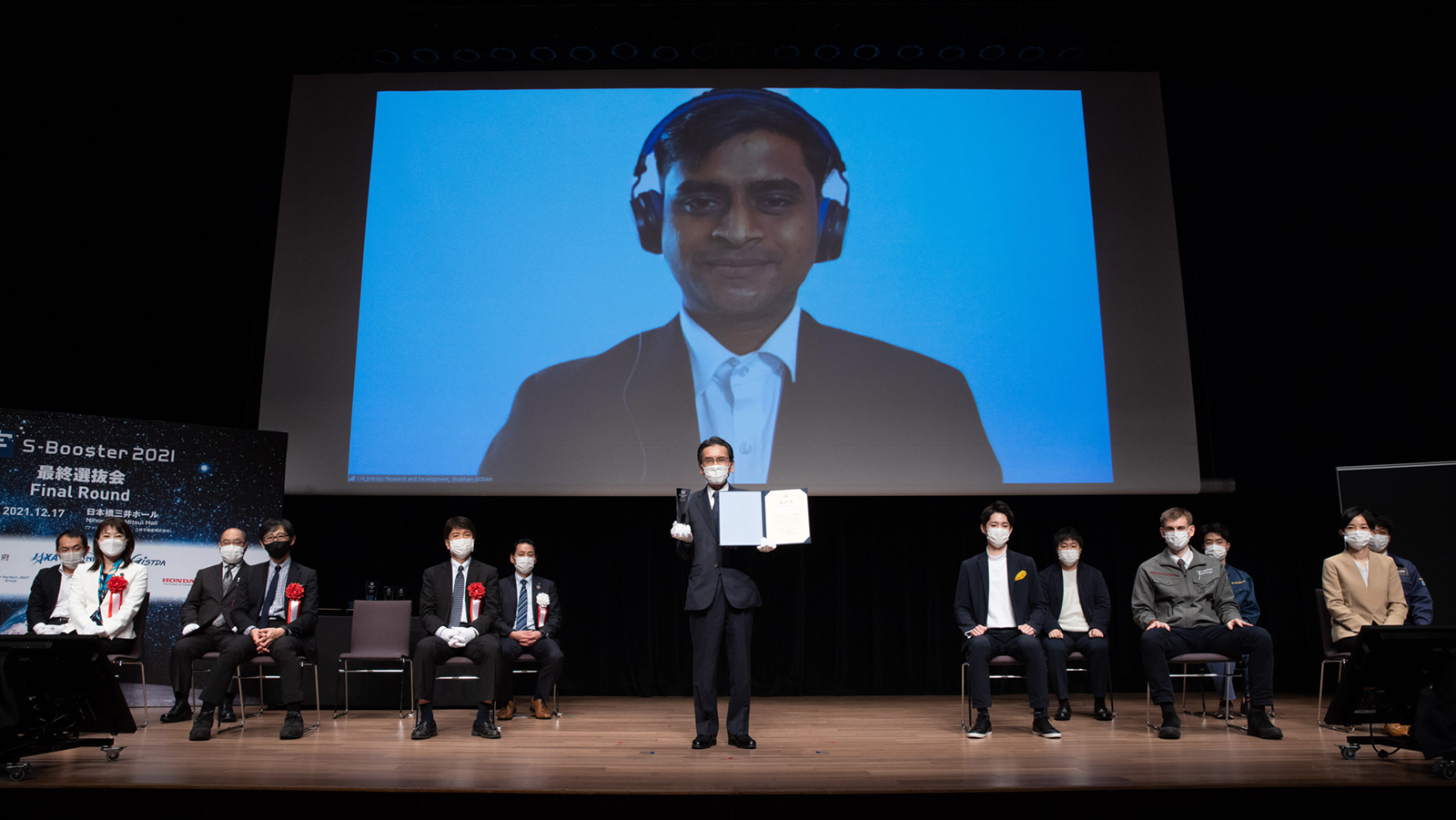
Team Name: Entropy Research & Development / Representative: Mr. Shubham Gosavi
Lead Mentor: Mr. Takeshi Hamachi (Spiral Inc.)
Sub Mentor: Dr. Ikkei Matsuda (SARR, LLC)
| Idea Outline | Power generation and management perform a substantial role in the satellite industry. The increasing annual number of satellites in Low Earth orbit will drastically heighten the need for continuous power. Currently, satellites implement a traditional method for power generation using the solar panel and radioisotope generator (RTG) with battery storage capacity. Such a system increases the weight, cost, and valuable space. And it can be lower by 15-25% by introducing Energy orbit (E-orbit), which is the concept of laser power transmission to customer satellites in LEO with 1600 Energy Satellite (E-Sat). E-Sat will also provide multiple services like energy transfer, orbit transfer, and de-orbiting to LEO-based satellites. Hence, customers will save a lot of money after accessing services from E-Orbit and generate new economic value with space sustainability. |
| Comment of Judge | We have participated as a sponsor from the first time of S-Booster. The reason for this award is that energy supply in space is a particularly important issue. Normally, we tend to think of building a large platform to have many solar panels and transferring energy from there, but it was a novel idea to prepare a lot of Energy Orbits and provide energy from LEO satellites. In addition, there is a lot of progress in intersatellite connectivity, including communications, observation data, and physical movement. This idea was meant to use lasers to supply electricity, but I felt that there was a great deal of potential in terms of business and applications, as there was also talk of orbit correction and debris removal. |
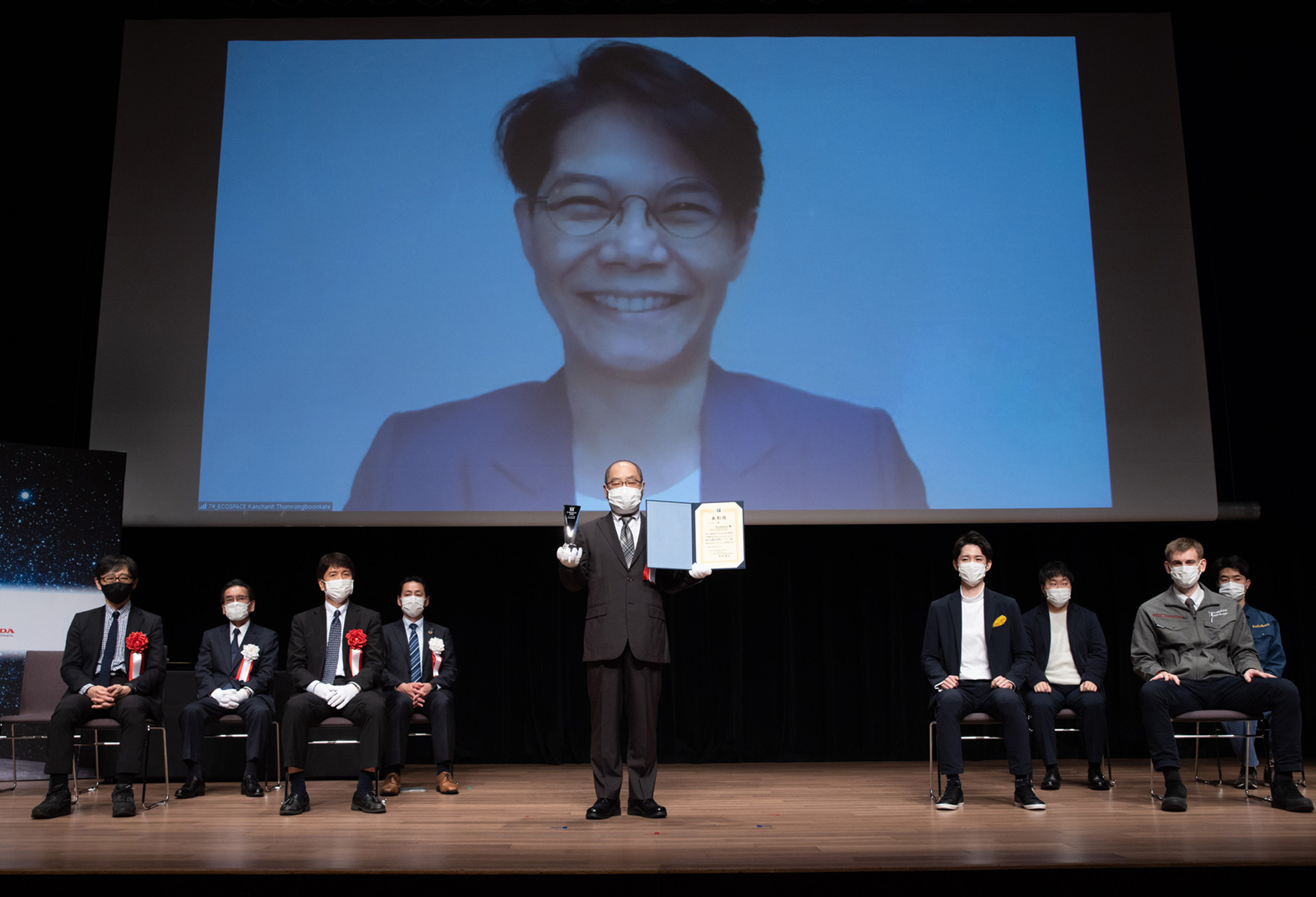
Team Name: EcoSpace / Representative: Ms. Kanchanit Thumrongboonkate
Lead Mentor: Mr. Hidetaka Aoki (Space Business Evangelist)
Sub Mentor: Mr. Masayuki Sakata (Deloitte Touche Tohmatsu LLC)
| Idea Outline | EcoSpace provides the wildfire early warning system detection by leverage the IOT Satellite communication in non-internet coverage area example forest. By the combination of ground sensors and IOT satellite, we can provide the early stage of wildfire monitoring. EcoSpace's Prototypes was successfully tested with IOT Satellite of the University of Tokyo during Oct 2020 to Mar 2021. |
| Comment of Judge | This is the first time our company has participated in S-Booster, and we are very happy and grateful for the opportunity. As for the reason for the award, we recently released a press release about our "Earth 'MIMAMORI' platform," and EcoSpace's idea was in line with that. Earth society and human society need to coexist, and we felt that EcoSpace's idea was a way to realize this, so we decided to give it the award. |
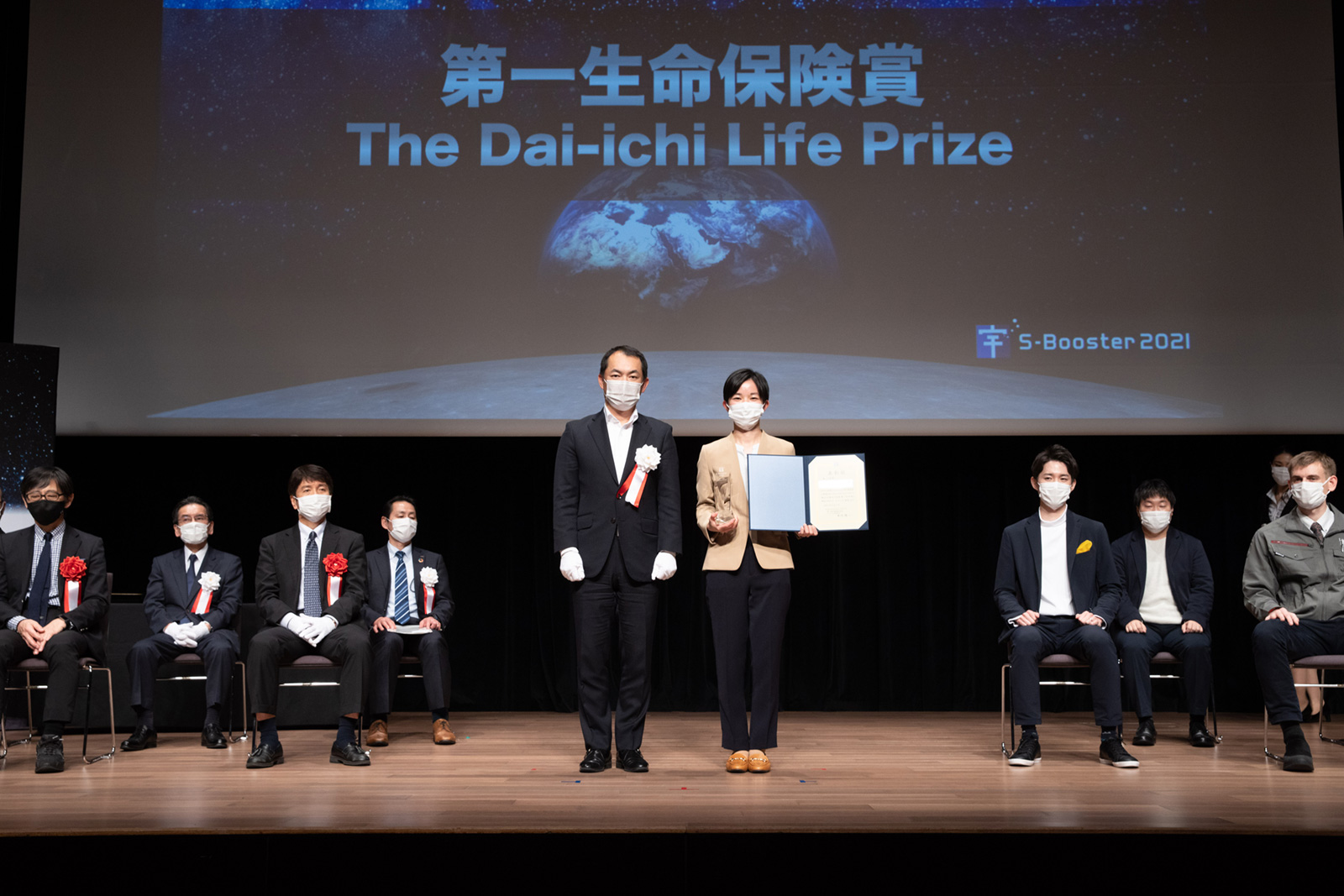
Team Name: MizLinx / Representative: Ms. Naho Yashiro
Lead Mentor: Ms. Ai Nemoto (Japan Agency for Marine-Earth Science and Technology)
Sub Mentor: Mr. Akira Yanagihara (VENTURE CAFE TOKYO)
Special Mentor: Mr. Tetsuji Odan (Mori Hamada & Matsumoto)
| Idea Outline | We will develop an ocean observation system to improve the efficiency of marine resource exploration. Marine resources can be divided into fishery resources and seabed resources such as rare metals. Currently we are developing a system to solve the problem of the fishery industry to realize a sustainable fishery. In the future, our goal is to create a marine data platform service that can be used in all maritime industries, including the exploration of seabed resources. |
| Comment of Judge | The Dai-ichi Life Insurance Company, Limited, is in the life insurance business, but it is also an institutional investor that invests the premiums it receives from its customers. As an institutional investor, we invest in venture companies and venture funds, and from our perspective as an investor, we found this proposal to be a truly clear equity story. It was interesting to see the story of the transformation from an analogue fishery using fish finders to one using space and digital technology. We felt that this proposal was a big one that would scale up quickly and we awarded it. |
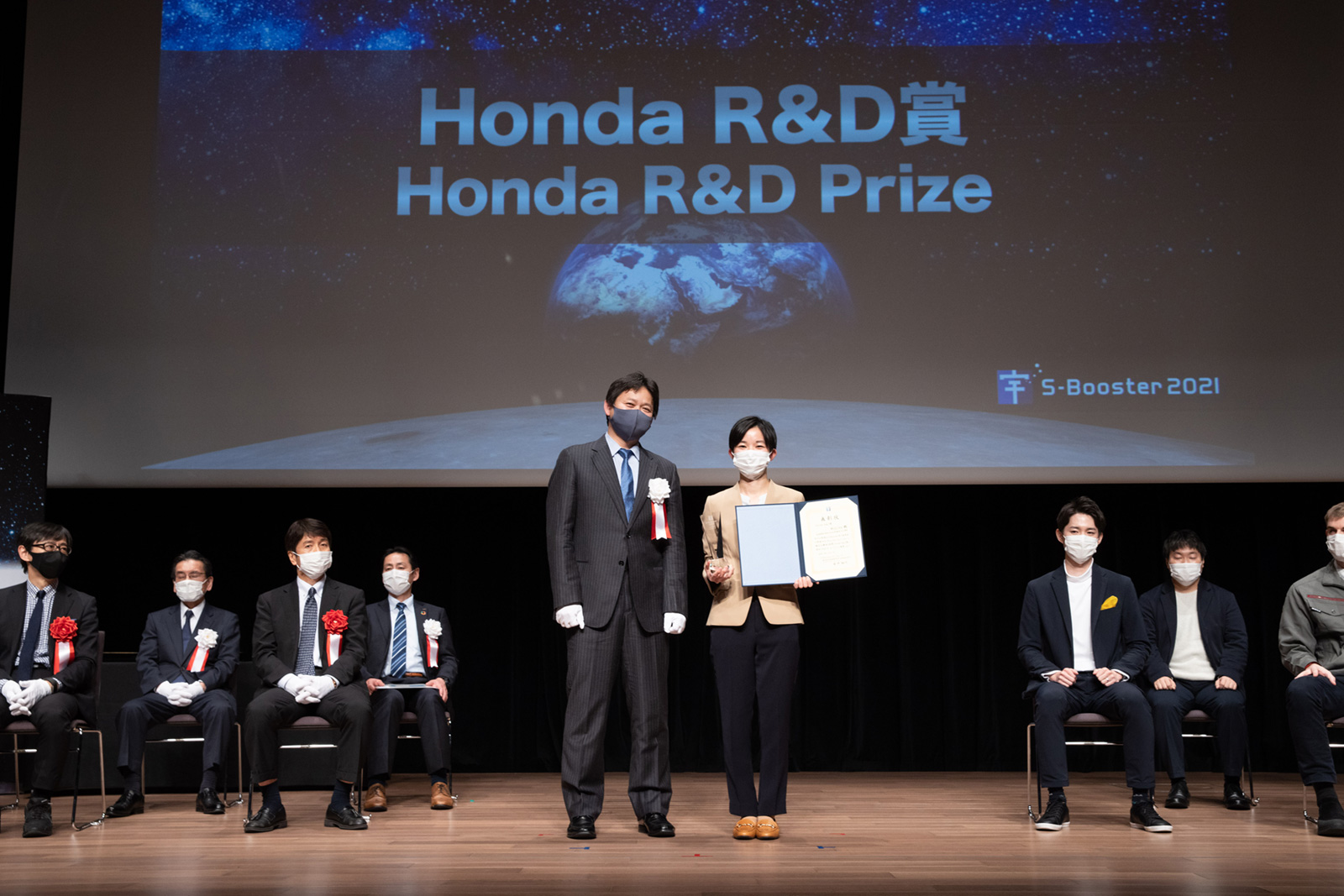
Team Name: MizLinx / Representative: Ms. Naho Yashiro
Lead Mentor: Ms. Ai Nemoto (Japan Agency for Marine-Earth Science and Technology)
Sub Mentor: Mr. Akira Yanagihara (VENTURE CAFE TOKYO)
Special Mentor: Mr. Tetsuji Odan (Mori Hamada & Matsumoto)
| Idea Outline | We will develop an ocean observation system to improve the efficiency of marine resource exploration. Marine resources can be divided into fishery resources and seabed resources such as rare metals. Currently we are developing a system to solve the problem of the fishery industry to realize a sustainable fishery. In the future, our goal is to create a marine data platform service that can be used in all maritime industries, including the exploration of seabed resources. |
| Comment of Judge | We have developed fast engines for ships to support fishers, but after hearing this proposal, we realize that fast engines alone are no longer enough to support fishers. And we felt that the technology like MizLinx's proposal was really needed, so we gave the Honda R&D Award to the team. |
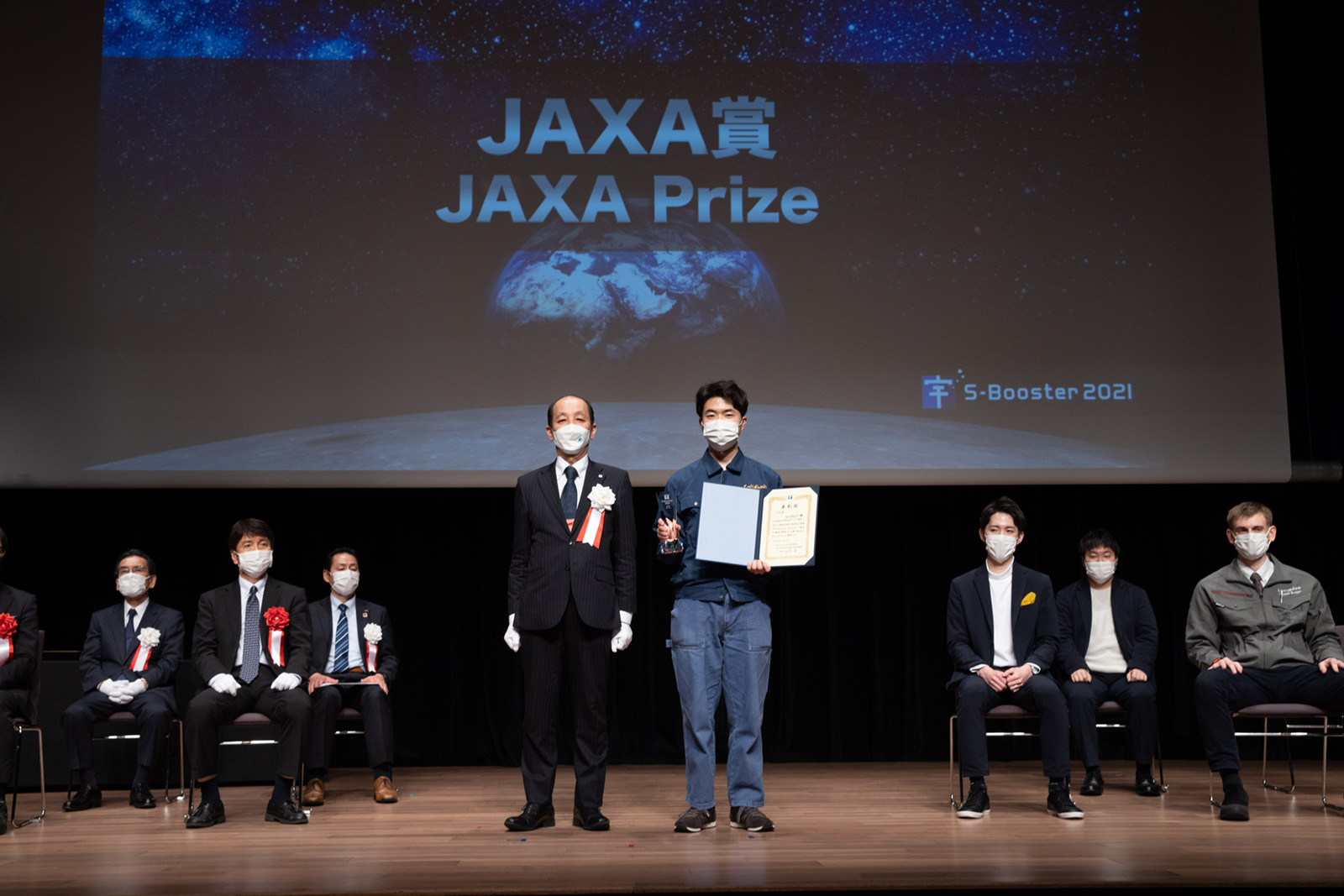
Team Name: Solidknit / Representative: Mr. Yuichi Hirose
Lead Mentor: Mr. Kenji Yoshida (PwC Business Assurance LLC)
Sub Mentor: Mr. Osamu Ogasawara (ABBALab Inc.)
Special Mentor: Mr. Tetsuji Odan (Mori Hamada & Matsumoto)
| Idea Outline | We enable manufacturing and recycling in space by developing a Solid Knitting Machine, a novel 3D printing technique using knitting. Solid knitting is our unique method to knit solid and dense objects. Thanks to the nature of knitting, the machine can make it possible to "unwind a chair to reknit it into a desk," which we call "update of physical objects." Since it needs tremendous costs to deliver objects to space, the high recyclability of our technology is drastically advantageous. |
| Comment of Judge | I heard that you were still in the research phase, but I have to admit that this is a really new idea, or a technology that I have never heard of. If we think about the future of international space exploration and activities on the moon, the proposed idea of turning a bed made with a 3D printer knitting machine into a desk and a chair, and even into shoes and clothes is something I have never heard of before. We chose it for the JAXA Prize because of its future potential and its affinity with exploration activities. |